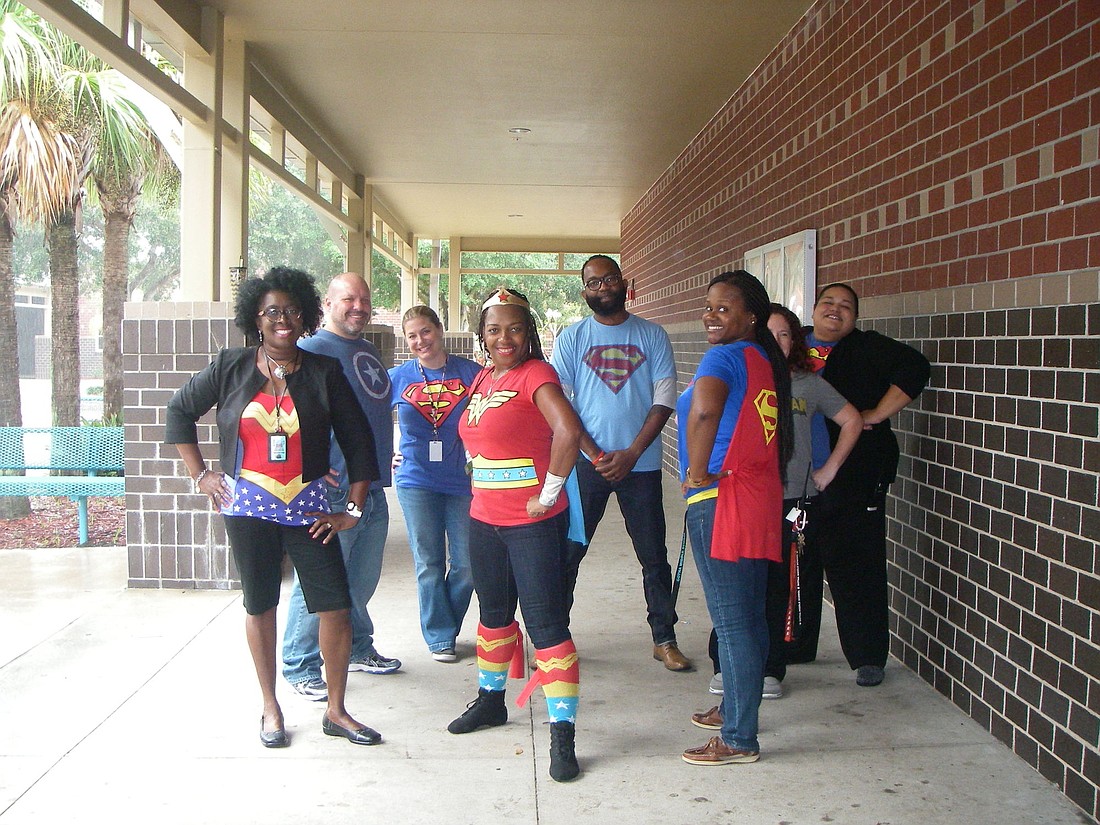- January 12, 2025
-
-
Loading

Loading

GOTHA Red Ribbon Week, which occupies the final week of October, is considered the oldest and largest drug-prevention campaign in the U.S.
During this week, schools in particular have students focus on the perils of substance abuse, peer pressure and destructive decisions.
But Gotha Middle School SAFE Coordinator Angela Nealy has instituted a firm effort for that wave of thinking to be present throughout the year.
This started with a Red Ribbon Week motto to “Wrap Gotha in Red.”
But because the end of the first marking period happened to be that week, days off school fell in the official timeframe, so officials decided to preempt it, Nealy said.
“At the beginning of October, I went to our art teacher, and she began talking with the students in art about Red Ribbon Week,” Nealy said. “They started creating posters. She was also given a flier to let the kids know that there was a possibility of a poster contest that’s given by the county.”
Each school could submit three posters to that contest, and Nealy had students enter a similar poetry contest, too.
“By the time the week actually started, we were able to go through all of the poems, go through all the posters … and all of the remaining posters — about 50 — our service learning students started displaying around the school,” Nealy said. “We also invited a guest from the Orange County Health Department, who … gave us an information session about drugs and alcohol.”
Once the school actually got to the official Red Ribbon Week, the first initiative was Team up Against Drugs, in which students wore their favorite sports apparel to show their support, she said.
“Throughout the day … we would ask kids, ‘Why are you representing (your team) today?’” Nealy said. “If they said … to show their support against drugs, then we would give them a little trinket.”
One such trinket was an armband with the words “Respect yourself; be drug-free” on it.
The next day was Saving the Day Against Drugs, in which superhero gear won children a prize, followed by Be All You Can Be; Be Drug-Free, a day on which students were encouraged to wear apparel with positive messages.
The week culminated in Red Day, during which everyone wearing red gathered in the school courtyard, Nealy said.
“We all said, ‘We are Gotha, drug-free,’” she said. “We also honored our participants in the contests. … They were celebrated by their peers.”
But the fight against drugs does not end with October, Nealy said.
Further action has included class collages on being drug-free and an ongoing education push, she said.
“Middle school of course is a very impressionable age, and children are very curious,” Nealy said. “They are exposed to so much more than especially when I was younger, but one of the things that we have been doing is trying to educate them, because they are thinking that things are safe and that it’s no big deal.”
So anytime there is a report of possession or even a conversation about substance use, the grade-level deans discuss the situation with the students before Nealy holds an interactive session on a particular drug topic, such as hookah, she said.
“This year, our principal has incorporated these two bend days,” Nealy said. “Twice a month (on) Thursday, we’re on a Wednesday bell schedule, which means we have an extra period. We’re doing character development, and during that … I develop lessons that are school-wide, that help educate the students on decision-making.”
This prepares students for potential real situations in a less overt way, where children can talk about many different issues, not just drugs, she said. It is an opportunity to correct misinformation, she said.
This includes addressing commercials, from which children can equate certain drugs, such as alcohol, with enjoyment and being desirable, Nealy said.
“They’re having fun and you hear music, so you want to do that,” she said she tells her students. “But when you really stop to think about what you’re putting in your body, do they stop to talk about that? And they say, ‘No, it’s about having a good time.’”
Thus, Nealy is able to explain the misinformation in a process about “thinking, not the drinking,” a catchphrase students have embraced, she said.
These kinds of activities continue each month, in hopes that students will ask questions and then receive the proper answers, Nealy said. In the last few years, drug possession levels have fallen as a result, she said.
To bolster this effort, adults can be examples for children by continuing education at home through word and action.
Contact Zak Kerr at [email protected].